#SafetySunday
Text

Laboratory Safety: The Hierarchy of Controls
Though many people may think of safety glasses or lab coats as the safest way to protect oneself in a laboratory setting, personal protective equipment (PPE) is actually considered the last and least effective step. The goal with safety in laboratories is almost always to make the use of PPE unnecessary or redundant - with the caveat and acknowledgement that sometimes, that just isn't possible.
Nevertheless, let's take a look at the steps that come before PPE:
Elimination of the hazard. Examples might be restricting the use of extension cords (possible trip hazard); doing work at ground level (e.g., eliminating the use of a ladder and bringing the work to the floor); or updating old or faulty equipment that might be more dangerous than modern versions.
Substitution of the hazard. Similar to elimination, examples include replacing chemicals with less dangerous versions that can perform the same task, or using less electricity or temperature.
Engineering controls serve to isolate people from hazards. Examples include chemical fume hoods, an interlock system for a laser setup, or remote controls to operate equipment from a distance.
Administrative controls are the rules and regulations that govern a laboratory space. They can include working on a buddy system, additional safety training, mandating rest breaks, putting up warning signs and labels, and developing standard operating procedures.
Sources/Further Reading*: (Image source - CDC) (OSHA) (OSHA hierarchy of controls) (SafetyCulture) (Lab Manager)
*Note: If you are looking for lab safety resources, any university with working laboratories should have guidelines available. Just keep in mind that as the rules get more specific, some may be location dependent (i.e., based on the local laws of the state, province, country, etc.).
86 notes
·
View notes
Text
Tweeted
#safetysunday Are you looking to revamp your safety meetings? Lacking a safety committee? I have multiple options available to help your business. #smbtwit https://t.co/IvIefi5Xyu
— Kevin Schmidt, LPC (@kevinianschmidt) Feb 5, 2023
0 notes
Photo

So Stoked to be @woodwardtahoe for camp. Week 3, Day 1 done Can't wait to get on the snow today 🤙 #henrikbogdon #henrikbogdon7 #snowboarding #safetysunday #woodwardtahoe (at Woodward Tahoe) https://www.instagram.com/p/Byz8Kn8Aq71/?igshid=5tkjp544i198
0 notes
Text
School is back in session which means there is much more activity on the sidewalks! Keep an eye out for children this week on the crosswalks! #SafetySunday https://t.co/gdwr5Elq62
School is back in session which means there is much more activity on the sidewalks! Keep an eye out for children this week on the crosswalks! #SafetySunday pic.twitter.com/gdwr5Elq62
— Shadetree Automotive (@ShadetreeAutoUT) January 28, 2018
from Twitter https://twitter.com/ShadetreeAutoUT
0 notes
Text

General Lab Safety: Equipment Maintenance
Proper maintenance of equipment is important to the safety of any environment, not just in the laboratory. Maintenance goes beyond simply making sure a piece of equipment is functioning - it also includes calibrating, cleaning, and inspecting the equipment and surrounding space, as well as the laboratory overall, and ensuring that the necessary consumables are available. These steps - and proper usage of the equipment in the first place - will extend the lifetime of the equipment.
Sources/Further Reading: (VWR) (InterFocus blog) (NIH) (University of Washington)
Image source.
67 notes
·
View notes
Text
Driving can lead to so many distractions. Keeping your eyes on the road protects you, as well as others! #SafetySunday https://t.co/Ls9Inka63m https://t.co/s7rgrFnOaE
Driving can lead to so many distractions. Keeping your eyes on the road protects you, as well as others! #SafetySunday https://t.co/Ls9Inka63m pic.twitter.com/s7rgrFnOaE
— Shadetree Automotive (@ShadetreeAutoUT) January 7, 2018
from Twitter https://twitter.com/ShadetreeAutoUT
0 notes
Text
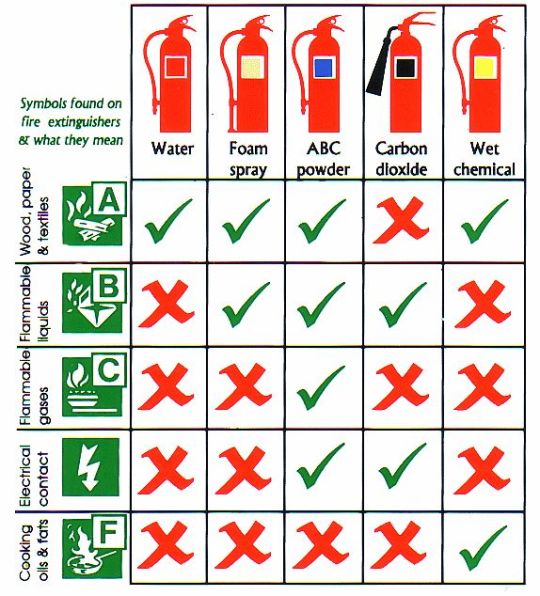
Safety Equipment: Fire Extinguishers
Not all fire extinguishers are the same and fire safety training is typically required to learn of the different varieties and fire extinguishing media before even attempting to use one in a laboratory setting. Generally speaking, fires are sorted by the media that is burning, and fire extinguishers are rated based on the classes they can extinguish:
Class A, globally, typically represents ordinary combustibles (paper, wood, etc.)
Class B typically represents flammable liquids. In the United States, it also represents flammable gases.
Class C outside the United States represents flammable gases. Within the United States it represents fires from electrical equipment.
Class D, globally, typically represents flammable metals.
Class E is typically only used in Australia and Asia to also represent electrical equipment fires.
Class F (known as class K in the United States) represents cooking fires, such as cooking oil or grease fires.
Some organizations/countries distinguish the varieties by color, while others are less specific. Symbols are typically used alongside class categories to distinguish which fires an extinguisher is capable of putting out. Extinguishers are typically only used on smaller fires that can be put out quickly.
It is important to note that, though organizational standards vary, seldom is using a fire extinguisher required. If a researcher feels in any way uncertain of their capabilities, or the size of the fire, they should not attempt to fight the fire - so long as other protocols (evacuation, pulling the fire alarm, contacting authorities, etc.) are followed.
Sources/Further Reading: (Image source - IFSEC Insider) (LSM) (Lab Manager) (University of Wisconsin-Madison) (Wikipedia)
60 notes
·
View notes
Text
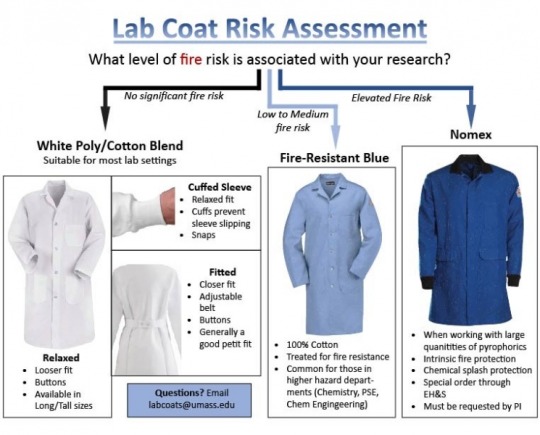
PPE: Lab Coats
Lab coats serve as torso, arm, and general body protection and, as with other forms of personal protective equipment, there are several varieties depending on the hazards one expects to encounter. The primary hazards lab coats are designed for are chemical hazards and temperature/fire hazards. Chemical resistant lab coats are typically white in color, made from a cotton-polymer blend. Fire-resistant lab coats are typically blue in color to distinguish them from their counterparts. For lower risks, pure cotton is used, treated for fire resistance. For higher risk situations, lab coats are typically made from Nomex.
Sources/Further Reading: (Image source - UMass) (University of Arizona) (UCSF) (NIH)
39 notes
·
View notes
Text

Cleanrooms
Cleanrooms are isolated rooms or chambers designed to limit airborne particles as well as separate hazardous particles from more everyday spaces. They are used in a variety of fields, including life sciences, but in materials science they are largely used in the electronics industry. Cleanrooms are rated and classified based on the size and quantity of particles that they remove from the air. Because people carry and create airborne particles themselves, significant PPE is required before entering a cleanroom.
Sources/Further Reading: (Image source - Wikipedia) (Clestra) (Clean Air Technology) (Mecart) (Colandis)
73 notes
·
View notes
Text
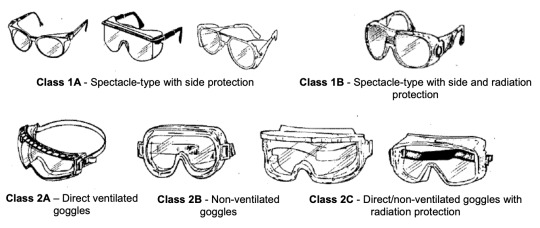
PPE: Eye Protection
There are four general types of eye protection common in laboratories. The first is safety glasses. These glasses typically have side protection are designed to protect primarily against impacts, though they do offer minor splash protection. The second type is safety goggles. Goggles cover more of the face and have their own categories, including vented and non-vented. Safety goggles are typically primarily protection against chemicals and chemical splashes, though they can offer minor impact protection. Third is face shields. These cover the entire face, providing greater splash protection. Finally, full-face respirators can also be considered eye protection, typically protecting against both chemicals and impacts.
Other forms of eye PPE exists, including welder's gear and varieties of the above categories where the lenses are tinted to protect against hot work, bright lights, or lasers. It is common in many organization's safety regulations to require eye protection to be put on before entering a laboratory or hazardous environment (or immediately after entering).
Sources/Further Reading: (Image source - University of Toronto Book Chapter) (UCSF) (True PPE) (3M) (University of Washington)
40 notes
·
View notes
Text

General Lab Safety: The Buddy System
Because working in a laboratory can go hand in hand with numerous hazards, many laboratories have rules and regulations about working alone. Some organizations may officially prohibit working alone unless a worker has experience in that particular lab; for other organizations, it is less a strict rule and more of a suggestion not to work alone. In other cases, it is specific tasks that require someone else to be in the room. Even when working alone, it is a good rule of thumb to have someone else be aware of what you are doing, including potentially periodic check-ins. If using the buddy system with an in-person partner, the partner should also be familiar with and trained on the lab space and any emergency procedures applicable.
Sources/Further Reading: (Image source - Johns Hopkins University) (The Synergist) (UCI) (Stanford) (RIT)
35 notes
·
View notes
Text
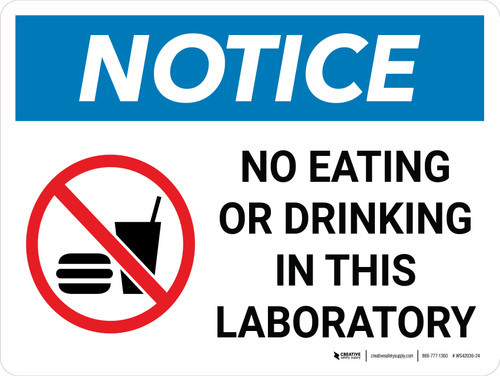
General Lab Safety: Food in the Lab
One general near-universal rule of laboratory safety is to prohibit the presence of any food or drink in the lab. This is largely to prevent contamination from any laboratory hazards on substances that are later going to be consumed. If a researcher or student has a water bottle, or even bag or backpack containing food, it should remain outside the laboratory. These regulations often extend to any activity that could increase the possibility of accidental ingestion, including chewing gum, applying cosmetics, and inserting contact lenses. While some labs with fewer hazards may have less restrictions, it is typically easier to prohibit food altogether, though, as always, rules will depend on the organization in charge of the lab and any local or national government regulations.
Sources/Further Reading: (Tulane) (Oregon State) (University of Iowa)
Image source.
31 notes
·
View notes
Text

PPE: Hand Protection
Most work in the laboratory involves the use of hands and gloves are mandatory in many environments and organizations, but the choice of hand protection is crucial. While thicker gloves may offer more protection, they can reduce dexterity and create more risks when doing tasks that require finesse. They length of time the gloves will be worn should also be considered. When dealing with chemicals, it is important to consult proper sources, as different chemicals react differently to different glove materials.
Nitrile, disposable, gloves are among the most commonly used when working with chemicals, but most other gloves are non-disposable. Cut resistant gloves can be used when working with sharps, and flame resistant gloves should be used during hot work. There are also rubber gloves for more reactive chemicals and cryogenic gloves for working with liquid nitrogen and similar materials. As with any PPE, maintenance is key: gloves with holes or rips should not be used and disposal gloves should be removed and replaced if they come in contact with chemicals. Some situations may require the use of more than one kind of glove, or double gloving.
Sources/Further Reading: (Image source - Eastern Washington University) (UC Berkeley) (MSC) (Tameson)
19 notes
·
View notes
Text

General Laboratory Fire Safety
If you learn nothing else about fire safety, the most important things to remember are evacuate and alert. Leave the area/building, pull the fire alarm, and call the authorities. You should only attempt to fight a fire if you have the proper training and you have first notified authorities and evacuated the building. (This is another reason why the buddy system is important, as tasks can be split among individuals. Even if you think the fire is small enough to be put out with an extinguisher, evacuation and alerting others must come first.) Isolation can also be useful when a fire occurs; closing fume hoods (if the fire is inside the hood) and laboratory doors when evacuating can slow the spread of a fire. Because of this, many organizations have regulations on when doors can be propped open and many corridors and buildings have fire safety doors that will close automatically when a fire alarm is pulled.
For a fire to occur, there are four general requirements: oxygen, fuel, a heat source, and a chemical reaction. (Note: the fire tetrahedron has begun to replace the fire triangle in fire training, which did not include the chemical reaction.) If any one of these items is removed, a fire should not occur. Proper housekeeping - a tidy environment and separation of hazards - is key to prevent fires from occurring in the first place.
Sources/Further Reading: (Image source - Kolb Website) (University of Wisconsin-Madison) (Lab Manager) (First Aid Product)
11 notes
·
View notes
Text
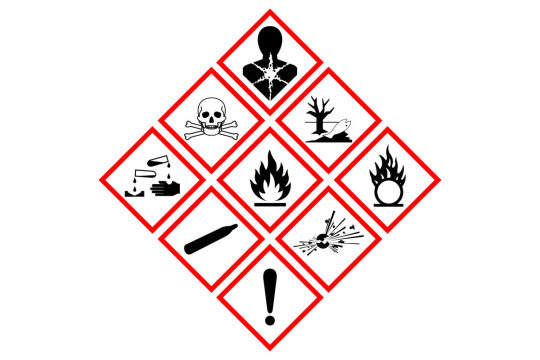
Laboratory Signage and Labeling
Proper labeling of hazards is crucial for good laboratory safety, as well as other labels about required PPE or prohibited substances and labels indicating safety equipment, among others. Exact labeling will vary from country to country and organization to organization for many things, but in general, pictograms are favored over text. Certain hazards are covered by the Globally Harmonized System of Classification and Labeling of Chemicals (GHS) created by the UN; pictograms from the GHS are shown above. For other hazards (such as biological hazards), requirements (such as laser safety glasses), or location-specific labels (such as where the first aid kit is), organizations or countries may come up with their own symbols.
Chemical labeling can again vary, but the GHS requires pictograms, signal words (e.g., "danger"), and more specific hazard statements and identifiers. It is common practice that when new chemicals are mixed or created in the lab (or otherwise in containers not from any manufacturer) that the full name of the chemical be written whenever possible (e.g., sodium hydroxide instead of NaOH) to prevent any confusion or uncertainty. In many cases, for individual laboratories, signage includes emergency contact information for the person(s) responsible for the laboratory.
Sources/Further Reading: (DuraLabel) (Lab Manager) (Oklahoma State University) (52 Lab safety symbol examples) (The GHS) (OSHA) (Chemicalsafety.com)
(Image source)
19 notes
·
View notes
Text
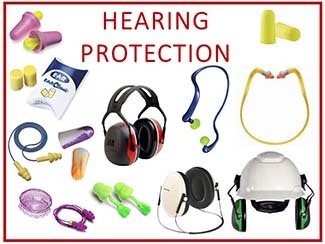
PPE: Hearing Protection
While less common in general laboratory settings, hearing protection can be absolutely vital in many situations. Exposure - especially repeated exposure - to high noise levels can lead to hearing loss, and hearing protection PPE is designed to prevent or mitigate that effect. Types of hearing protection range from disposable foam earplugs to electronic ear muffs. Organizations typically have a level of sound above which hearing protection is required, such as 80dB, but also consider the length of time an individual will be exposed to the sound. Insufficient hearing protection can lead to health problems - but oversufficient hearing protection can lead to a lack of awareness of an individual's surroundings, which can be hazardous as well, as individuals could miss alarms or other important sounds.
Sources/Further Reading: (Image source - Cornell) (NSW SafeWork) (Archived CDC page) (3M)
13 notes
·
View notes